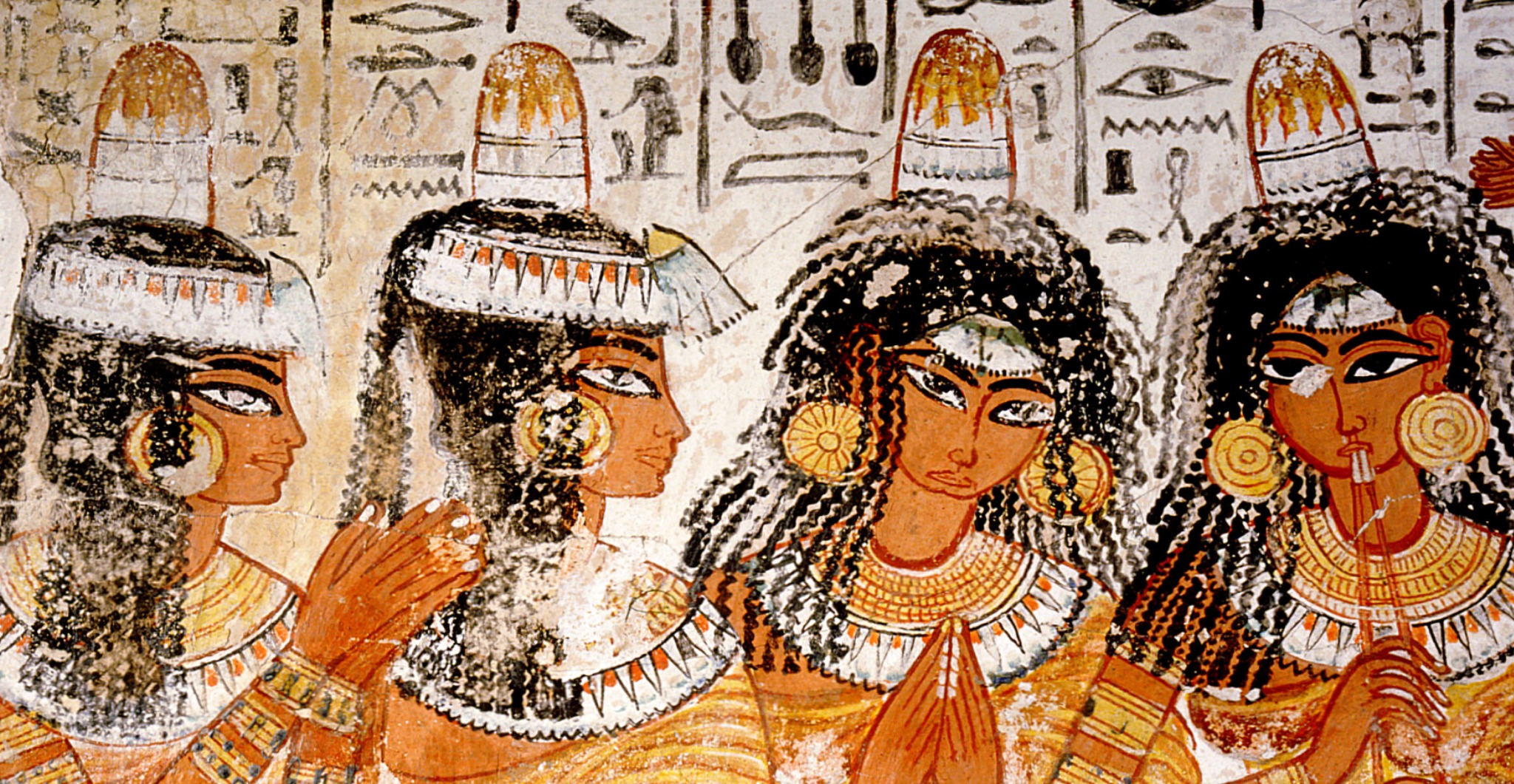Long ago, ancient Egyptian women wore what archaeologists describe as a head cone. At first it was speculated that these were simply fictional items depicted through art on Egyptian walls. Now however, being able to study an actual finding of a real head cone is proof that they were real and important enough for some some women to be buried with. The finding happened at a burial tomb at Amarna, in Egypt. Not quite hats, exactly, these objects are depicted on a great number of ancient Egyptian artworks, but their purpose continues to baffle archaeologists, who can only theorize about them.
That curiosity was abated somewhat a decade ago, when experts discovered two head cones, one of which was actually on a woman’s head at the site at Amarna. Unfortunately, because it is a site for working folks of ancient Egypt, the bodies and artifacts are not as well preserved as scientists would like. It took experts nearly a decade to secure the funds and complete an important examination of the head cones which were published in the journal Antiquity. Still, finding an actual head cone was a thrill, according to archaeologist Anna Stevens, who was present for the find.
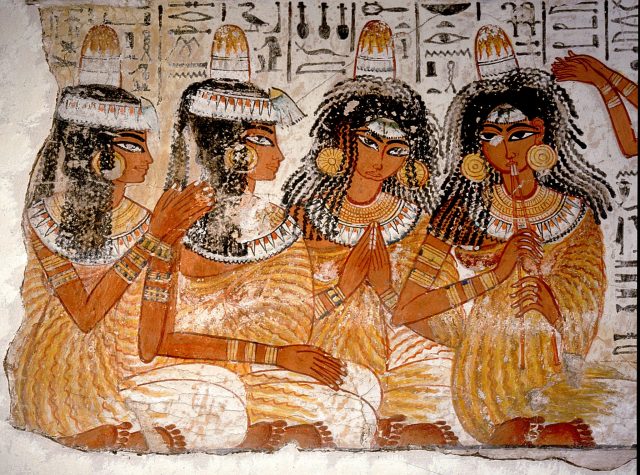
“It was obviously very, very different, not something we’d seen in any burials before,” she told the National Geographic’s online website this month. Of course head dresses of different types have been found in royal tombs, in particular, but not at a site where working class individuals were buried. Only about 10 percent of ancient Egypt’s population was wealthy enough to warrant elaborate tombs, Stevens confirmed; most folks were buried in simple, unadorned graves.
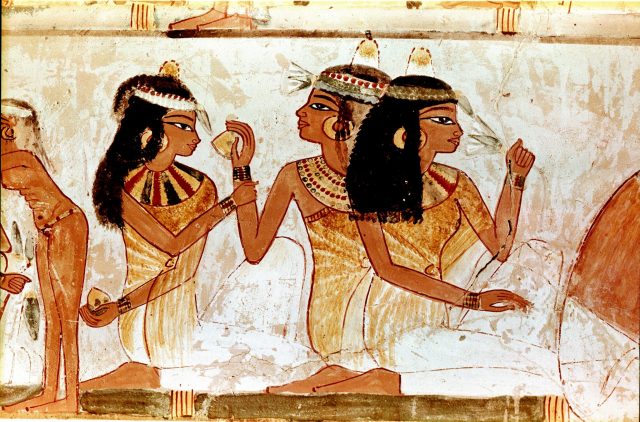
The dig was led by Cambridge University, and funded in part by the National Geographic Society. The discovery meant that, for the first time, archaeologists could study the head cones themselves, rather than simply look at a head cone in ancient Egyptian art. It led to several theories about their purpose in women’s lives, if in fact they did serve a purpose, other than purely decorative.
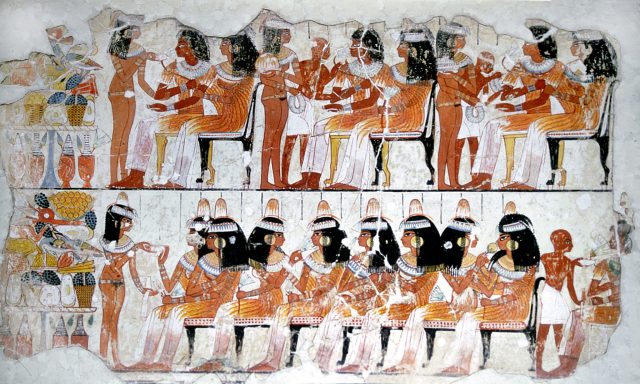
Initially, researchers thought that the head cones were organic and actually solid lumps of perfumed fat that melted over the heads of the women as a kind of scented hair gel or tonic. However the findings from Amarna seem to negate that theory. The cones weren’t solid. They were actually hollow shells folded around some type of brown-black organic matter the archaeologists think may be fabric. Both of the head cones had chemical signatures of decayed wax. Thus, the team surmised that they were made of beeswax, which was the only biological wax known to be used in ancient Egypt. Moreover, no traces of wax were found in the hair of the most well-preserved remains.
Given artistic associations of the objects with childbirth, next they thought the cones had something to do with fertility. But the fact that they were found in an ordinary, cemetery for commoners makes it difficult to interpret the meaning behind them.
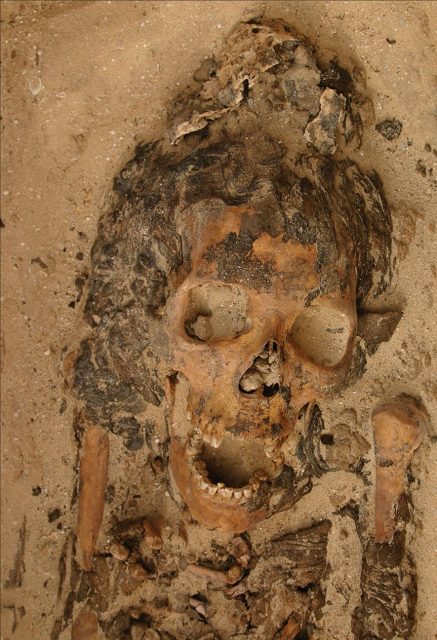
An archaeologist from the University of Sydney in Australia has posed a new theory: perhaps they were worn by dancers, who worked to please the gods. Nicola Harrington told National Geographic, “the cones (were) worn in the presence of the divine,” she said. She believes the skeletons found may be those of dancers, because of the spinal damage they show. “Perhaps the cones marked (dancers) as members of a community that served the gods. That could explain why these people were buried with the cones, despite their basic burials,” she reasoned.
Women wearing a head cone is a popular motif in ancient Egyptian artwork, on everything from coffins to papyrus scrolls, but the excavation at Amarna is the first time actual cones have been discovered. Before that, some archaeologists even doubted their existence entirely, believing them to be mere whimsy on the artist’s part.
The archaeologists on this dig, however, believe there may have been many more actual head cones in existence, but that early 20th century sites may have simply not found them or, even worse, destroyed them during the excavation. As Stevens acknowledged, “in the very early days of Egyptology, the work was rushed, a bit haphazard.”
Related Article: Tattoos on Ancient Egyptian Mummies Revealed Through Infrared Imaging
Consequently, they can’t be sure whether more head cones do exist, either in sites already explored or in burial sites waiting to be found. And the reason for their existence is still a mystery that tantalizes archaeologists and Egyptologists alike, and no doubt will continue to do so until more concrete evidence of their purpose is found.
